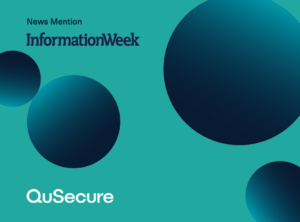QuSecure Honored as Global Product Leader in Post-Quantum Cryptography by Frost and Sullivan

Nathan Eddy / Information Week / 21 June 2023
Organizations must take a holistic approach to identity threat detection and response, addressing both the technical side of security and the human factor. Technical solutions such as multi-factor authentication, robust access control policies, and centralized logging help ensure that only authorized users have access to sensitive data. This can also be augmented by behavior analytics, which continuously monitor user accounts for suspicious activity. In addition, technical solutions must be combined with employee training and collaboration to ensure that everyone is informed on the latest threats and security best practices.
Organizations must also invest in threat intelligence feeds that provide up-to-date information about new cyber threats. By staying abreast of the latest developments in cybersecurity, organizations can respond quickly and proactively to potential threats before they become damaging incidents. Finally, organizations should consider investing in cutting-edge identity protection technologies to better defend against the latest cyber threats.
Identity threat detection and response are essential for any organization that wants to stay secure in today’s digital landscape. By combining technical solutions with employee education, collaboration, and investment in cutting-edge security solutions, organizations can build a resilient identity security framework to protect them from the latest cyber threats. Investing in a comprehensive identity threat detection and response program is essential for any organization looking to protect its data, customers, and reputation.
Read the full article from Information Week here.